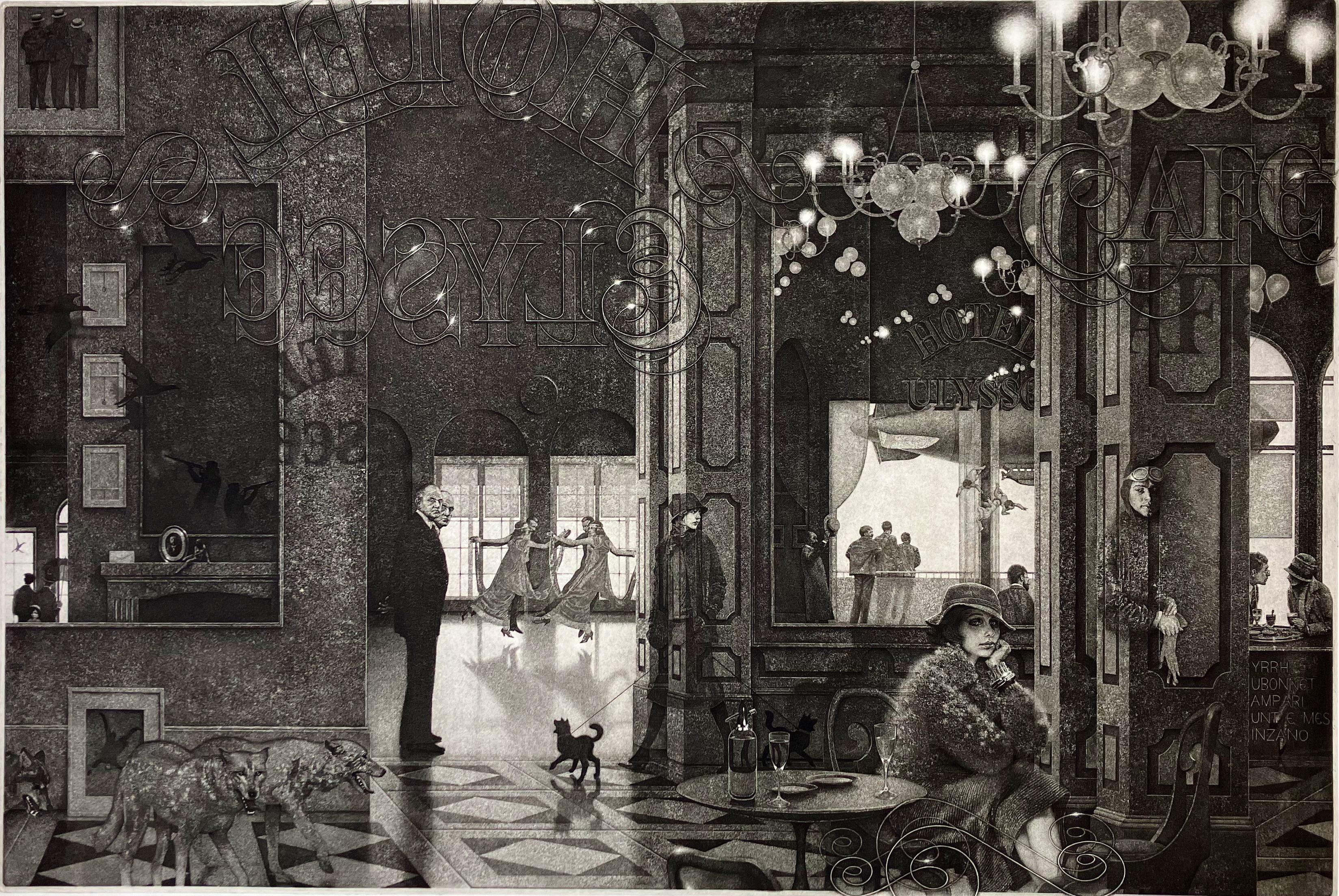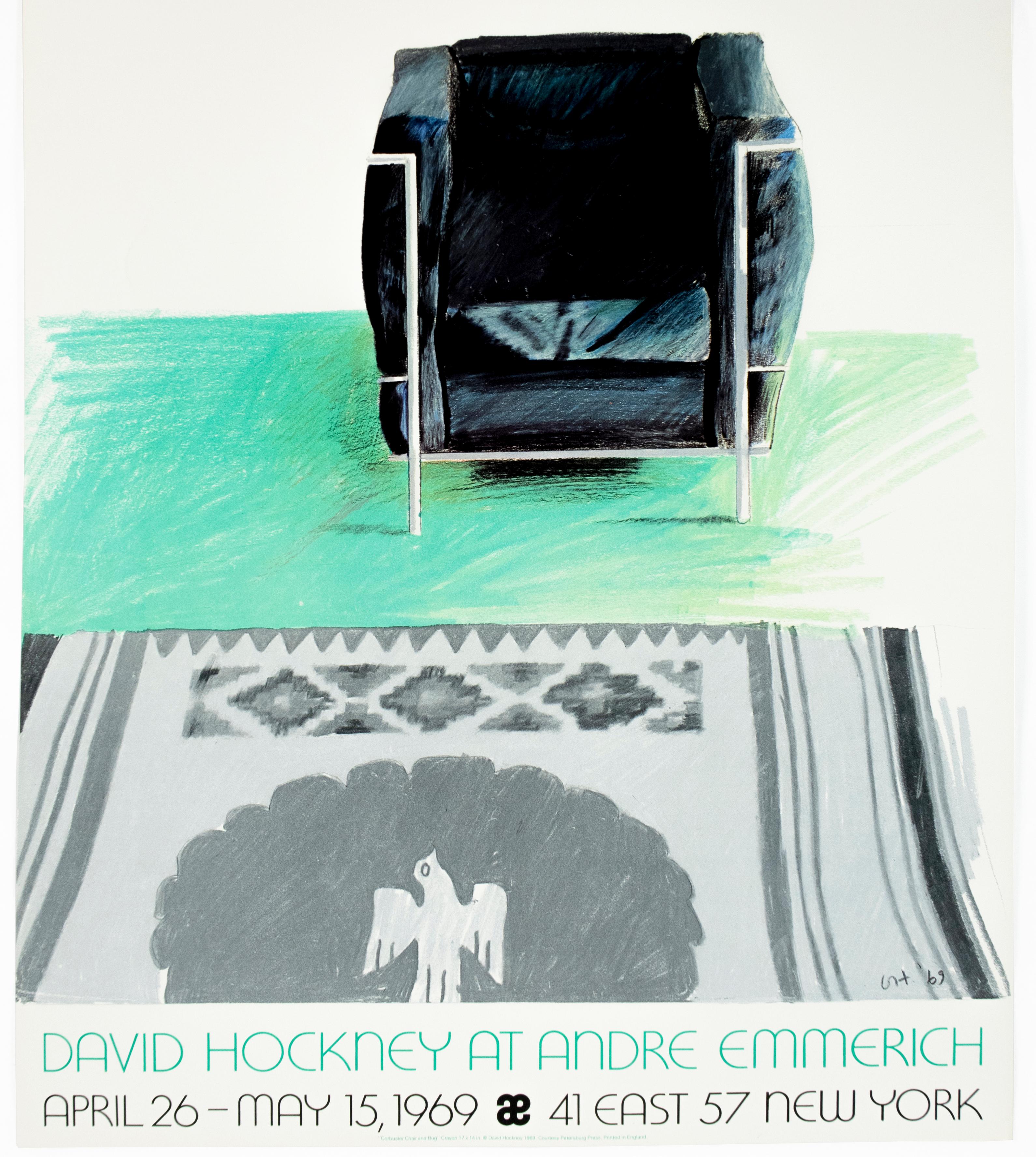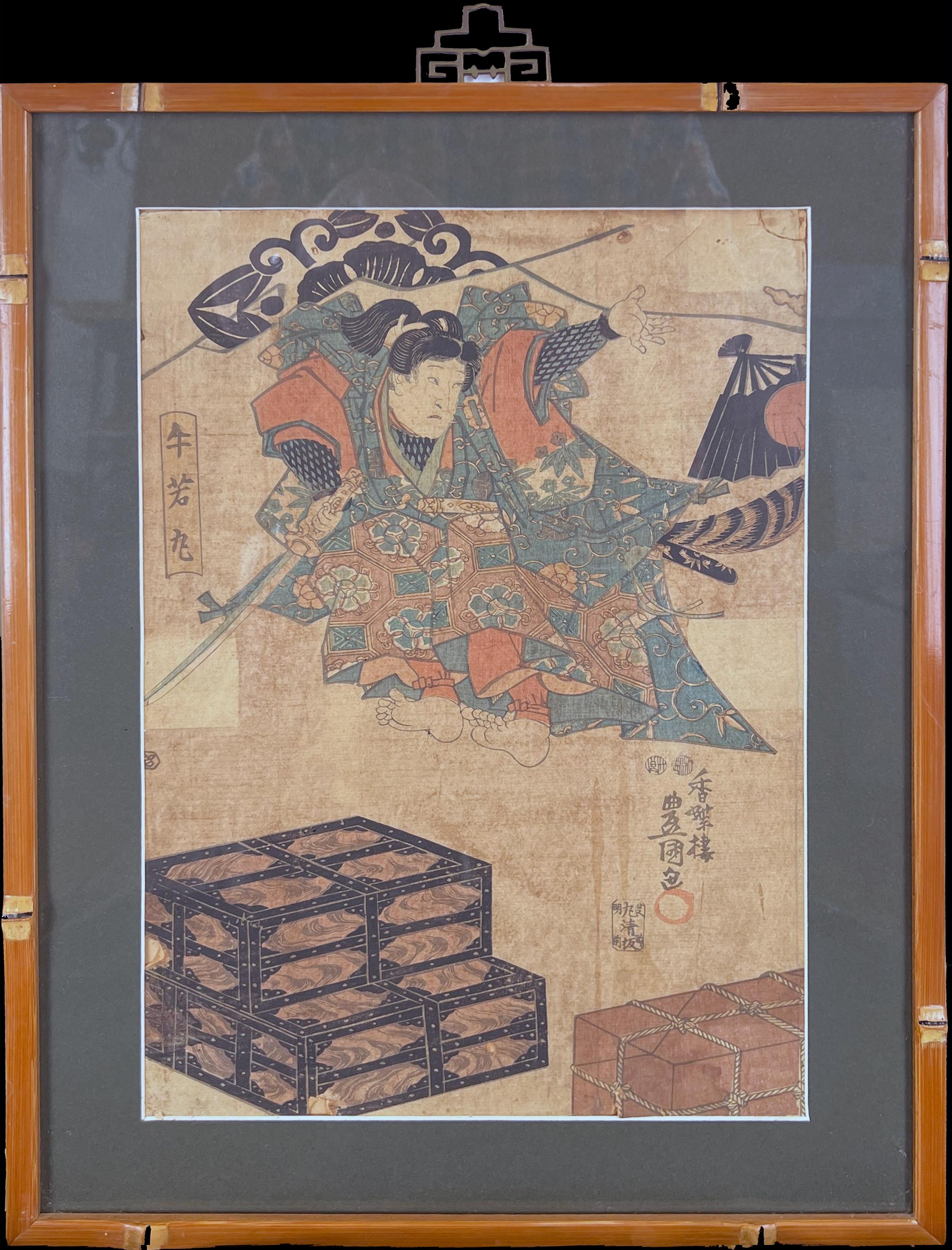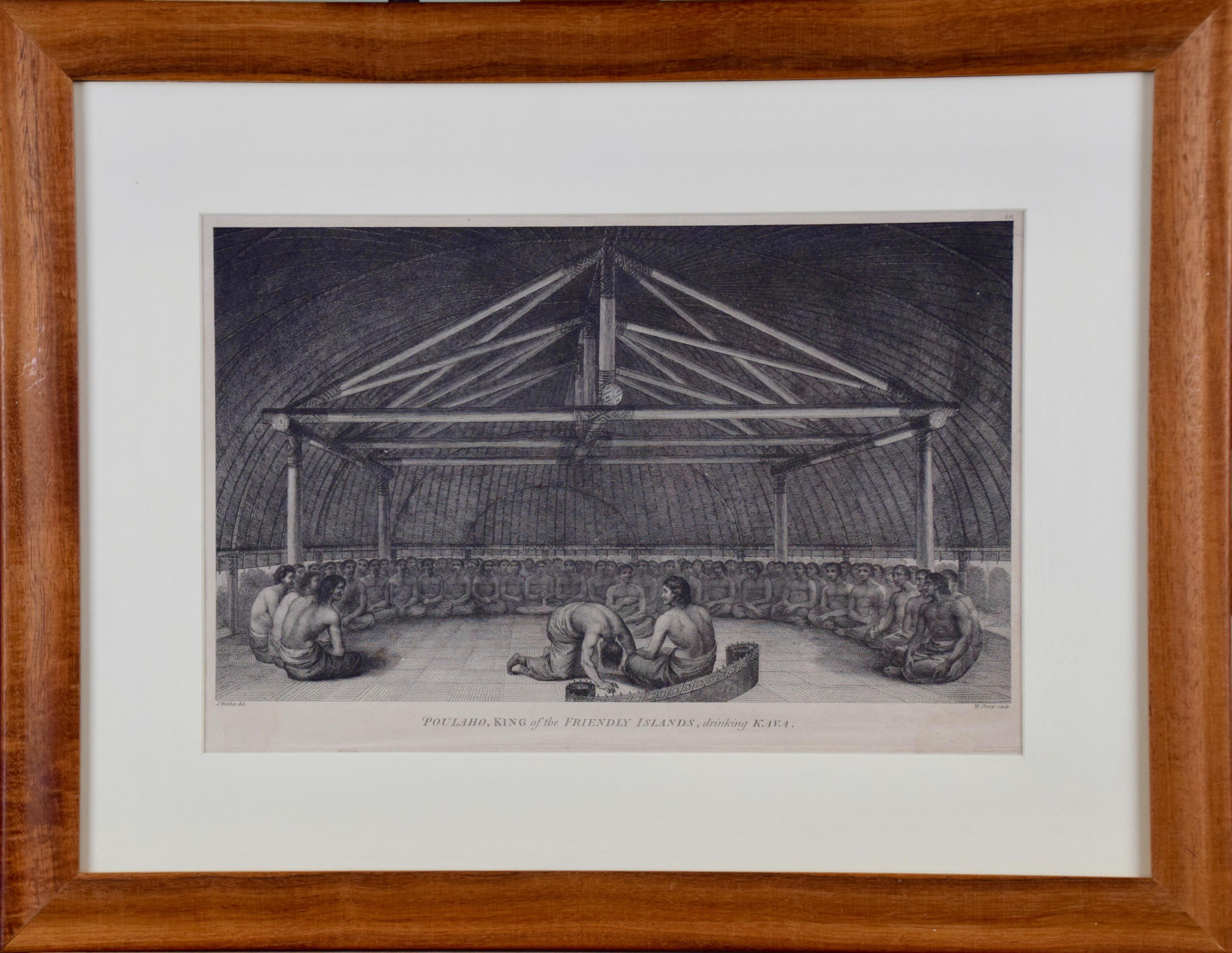Items Similar to Vintage 1980 Judaica Chassidic Poster Simchas Torah Hakafos Chabad Artist
Want more images or videos?
Request additional images or videos from the seller
Zalman KleinmanVintage 1980 Judaica Chassidic Poster Simchas Torah Hakafos Chabad Artist 1980
1980
About the Item
Vintage framed plate signed poster.
Zalman Kleiman, Born in Leningrad, Russia in 1933 into a Lubavitcher Hasidic family, was a self taught Chassidic artist living in Crown Heights, Brooklyn, New York. Unlike many other current Hasidic artists, who come from a secular, art background, Zalman came from a family that has been steeped in the Chabad, Lubavitch tradition for generations. After the death of his parents, he and his sister were sent to Siberia, where he was adopted by a rabbi. For a time he lived in the Central Asian state of Samarkand, Uzbekistan amongst the Bukharian Jews. Kleinman immigrated to Paris, where he studied at an underground Lubavitch yeshiva. From Paris, he traveled to Israel where he began painting. He returned to Paris where he met and married his wife Rosa. In 1958, they immigrated to New York City and to the Brooklyn neighborhood of Crown Heights. Despite a childhood filled with exile, war and anti-Semitism, Kleinman’s work is not filled with sadness or tragic recollections. Rather he sought to evoke the tenacity of the Chassidic culture that refused to succumb to hardships in communist Russia. At the tender age of 13, Kleinman left Russia to travel with a group of Polish Jews through Displaced Persons’ camps, finally settled in France for three years at a yeshiva in Paris. Kleinman then traveled to Israel and joined the army as an artist for the military rabbinate after studying in Paris. His artist’s studies where briefly sponsored by Zalman Shazar, the third president of Israel, before Kleinman made the decision to develop his talents without formal training. After several years in Israel, Kleinman returned to Paris, where he met and married his wife Rosa. The Kleinmans settled in Crown Heights, Brooklyn after having traveled to New York, where they would raise a family. There, while a resident in the immediate vicinity of the Grand Rebbe of Lubavitch, Kleinman produced a series of penetrating and moving paintings that sought to portray the life of his Hassidic community. In a letter to the artist from the late Lubavitcher Rebbe, Rabbi Menachem Mendel Schneerson, Kleinman's artwork is described as "impressive and simplistic." Kleinman illustrated books and magazines while developing a reputation as a painter and was able to support his family as an artist. An esteemed artist who painted Jewish life within the Hasidic community, Kleinman died in 1995. Along with Chenoch Hendel Lieberman and Michoel Muchnik his works formed part of the cultural landscape all Chabad Chassidic families and children grew up with.
- Creator:Zalman Kleinman (1933, Russian)
- Creation Year:1980
- Dimensions:Height: 27 in (68.58 cm)Width: 30.5 in (77.47 cm)
- Medium:
- Movement & Style:
- Period:
- Condition:minor wear, see photos.
- Gallery Location:Surfside, FL
- Reference Number:1stDibs: LU38213158682
About the Seller
4.9
Platinum Seller
These expertly vetted sellers are 1stDibs' most experienced sellers and are rated highest by our customers.
Established in 1995
1stDibs seller since 2014
1,549 sales on 1stDibs
Typical response time: 1 hour
- ShippingRetrieving quote...Ships From: Surfside, FL
- Return PolicyA return for this item may be initiated within 3 days of delivery.
More From This SellerView All
- 1936 Lithograph Interregnum, Cigar, Kid w Toy Gun, Small Edition Weimar GermanyBy George GroszLocated in Surfside, FLHand lithography on BFK Rives French hand moulded paper Style: German New Objectivity (Neue Sachlichkeit) According to the frontis these were produced by Hand Lithography. According...Category
1930s Modern Interior Prints
MaterialsLithograph
- 1936 Lithograph Interregnum Portfolio Butcher Shop Small Edition Weimar GermanyBy George GroszLocated in Surfside, FLHand lithography on BFK Rives French hand moulded paper Style: German New Objectivity (Neue Sachlichkeit) According to the frontis these were produced by Hand Lithography. According...Category
1930s Modern Interior Prints
MaterialsLithograph
- 1936 Lithograph Interregnum portfolio Artist Studio small edition Weimar GermanyBy George GroszLocated in Surfside, FLHand lithography on BFK Rives French hand moulded paper Style: German New Objectivity (Neue Sachlichkeit) According to the frontis these were produced by Hand Lithography. According...Category
1930s Modern Interior Prints
MaterialsLithograph
- 1936 Lithograph Interregnum Street Riot Protest Small Edition Weimar GermanyBy George GroszLocated in Surfside, FLHand lithography on BFK Rives French hand moulded paper Style: German New Objectivity (Neue Sachlichkeit) According to the frontis these were produced by Hand Lithography. According...Category
1930s Modern Interior Prints
MaterialsLithograph
- 1936 Lithograph Interregnum Portfolio Windblown Man Small Edition Weimar GermanyBy George GroszLocated in Surfside, FLHand lithography on BFK Rives French hand moulded paper Style: German New Objectivity (Neue Sachlichkeit) According to the frontis these were produced by Hand Lithography. According...Category
1930s Modern Interior Prints
MaterialsLithograph
- Machpela Cave Chevron 1969 Israeli Judaica Lithograph Baruch Nachshon Chabad ArtBy Baruch NachshonLocated in Surfside, FLBaruch Nachshon, was born in Mandatory Palestine in 1939, in the city of Haifa. Nachshon began to paint in early childhood, and developed his relationship to art and to artists throu...Category
1960s Modern Interior Prints
MaterialsLithograph
You May Also Like
- Interiors IV: Hotel Paradise CafeBy Peter MiltonLocated in San Francisco, CAArtist: Peter Milton (American, 1930-) Title: Interiors IV: Hotel Paradise Café Year: 1987 Medium: Resist-ground etching and engraving on copper Paper: BFK Rives Image size: 23.5 x ...Category
1980s Realist Interior Prints
MaterialsEtching, Paper
- Vintage Le Corbusier '69 David Hockney Exhibition Poster Kilim southwest rugBy (after) David HockneyLocated in New York, NYShading in bright turquoise above a Southwestern style thunderbird Kilim rug adorns this original exhibition poster for David Hockney's 1969 show at Andre Emmerich, New York. This po...Category
1960s Realist Interior Prints
MaterialsLithograph
- Kumasaka Chōhan to Ushiwakamaru - One of a Diptych Original Woodcut PrintBy Utagawa Kunisada (Toyokuni III)Located in Soquel, CAKumasaka Chōhan to Ushiwakamaru is a Japanese Ukiyo-e print created between 1848 and 1854 by artist Utagawa Kunisada (Japanese, 1786-1864). The print is a Diptych, and is part of the...Category
1850s Realist Figurative Prints
MaterialsPrinter's Ink, Rice Paper, Woodcut
- "King of the Friendly Islands" (Tonga); Engraving from Captain Cook's 3rd VoyageBy John WebberLocated in Alamo, CA"Poulaho, King of the Friendly Islands, Drinking Kava" is an engraving created by William Sharp (1749-1824), from a drawing by John Webber (1752-1793), who was the artist on Captain James Cook's 3rd and final voyage of discovery. It was published in the atlas of "A Voyage to the Pacific Ocean Undertaken by the Command of His Majesty, for Making Discoveries in the Northern Hemisphere", the official British Admirality sanctioned journal published upon completion of the voyage in London in 1784 by Strahan & Cadell. Captain Cook visited Tonga on his 3rd voyage, which he named The Friendly Islands because of the warm welcome he and his crew received, unlike some of the other more hostile Pacific islands. The engraving depicts Cook and his men observed a kava ceremony at the village of Mu’a on Tongatapu. King Paulaho sits in the centre foreground, his back to the spectator with a man kneeling before him. The ceremonial mat depicted behind Paulaho indicates that nobody was allowed to sit behind him. The figure in the centre holds a single cup, referring to the Tongan custom of offering the cup to the king first. Kava is native to the islands of the South Pacific and was first described for English readers in 1768 by Captain James Cook. The kava root has been used for centuries as a central feature of ceremonies and celebrations because it was able to bring about a calming and pleasant social atmosphere. The root was crushed and processed into coconut milk to become the focal ceremonial beverage, simply referred to as kava. This engraving is presented in a Koa wood frame and a white mat. Koa wood is legendary in Hawaii. There are occasional faint spots, but the print is otherwise in very good condition. This amazing Koa wood is native to Hawaii and it is known for the deep rich colors and varied grain pattern. Koa has an honored heritage in Hawaii and is highly revered and sacred. The word “koa” means “warrior” in Hawaiian. The warriors of King Kamehameha the Great, created canoes and weapons from a wood plentiful on the Big Island of Hawaii. This wood became synonymous with the warriors themselves, and it became known as koa. There are three other engravings listed from the official journal of Captain Cook's 3rd voyage available that are presented in identical Koa wood frames and mats (LU117324682422, LU117324684052, LU117324684032). They would make a wonderful grouping for a display of 2, 3 or 4 prints. A discount is available for a grouping depending on the number of items included. Captain Cook is remembered as one of the greatest explorers and navigators in history. His explorations included Australia, New Zealand and islands of the South Pacific and the northwest coast of North America. Hawaii was discovered by Captain Cook during this voyage. Hawaii was originally called The Sandwich Islands in honor of The Earl of Sandwich...Category
1780s Realist Figurative Prints
MaterialsEngraving
- Scene Galante au XVIII eme Siecle #1By Antoine CalbetLocated in San Francisco, CAThis artwork titled "Scene Galante au XVIII eme Siecle" c.1930 in an aquatint on paper by French artist Antoine Calbet, 1860-1944. It is hand signed in pencil at the lower right corner. The plate mark (image) size is 9.60 x 12.25 inches, framed size is 16.5 x 19.5 inches. Framed in a wooden gold and black frame, with fabric matting. The artwork is in very good condition, frame and matting are in good condition, frame have some minor dents, matting have a small point of discoloration at upper left. About the artist. Antoine Calbet is the son of Marie Singlande and Jean-Baptiste Calbet, landowner at a place called Gaubert. Trained at the School of Fine Arts in Montpellier by Édouard - Antoine Marsal (1845-1929) where he learned drawing, this illustrator and illustrator, a painter of nudes and gallant scenes, was very popular during his lifetime. Antoine Calbet is then admitted to the School of Fine Arts in Paris in the studio of Alexandre Cabanel (1823-1889). He was a member of the admission jury of the Beaux-Arts from 1913 to 1930. He began to exhibit in 1880 and became a member of the Society of French Artists . He was the friend of his compatriot of Lot-et-Garonne, the President of the Republic Armand Fallières , for which he drew the menus of his meals, which made him known in Parisian salons.He illustrated works by Jean Lorrain , Henri de Regnier , Pierre Loues 3 and for periodicals like L'Illustration . Selected museums and collections Dallas , Dallas Museum of Art : Back woman...Category
Mid-20th Century Realist Figurative Prints
MaterialsAquatint
- "The Spinner, " Etching signed by Jean Leon Gerome FerrisBy Jean Leon Gerome FerrisLocated in Milwaukee, WI"The Spinner" is an original etching by Jean Leon Gerome Ferris. It depicts a woman in an interior next to a spinning wheel. The artist signed the piece lo...Category
1880s Realist Figurative Prints
MaterialsEtching
Recently Viewed
View AllMore Ways To Browse
Polish Jew
Hendel Lieberman
Yoshitomo Nara Miss Spring
Alejandro Casanova
Alex Katz Harbor
Aztec Fountain
Carlo Perrin On Sale
Carousel Etching
Chagall Paradis
Chana Orloff 1923
Claudio Cintoli On Sale
Colleen Ross
Collier Picasso
Crash Roy Lichtenstein
Dali Don Quixote Etching
Heather Howard
Helene Guetary On Sale
Hogarth Election




